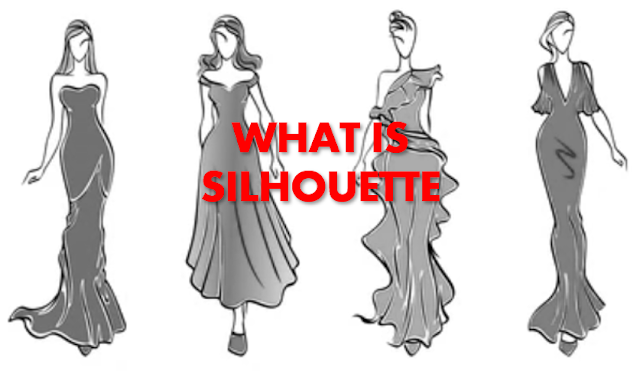Definition of Silhouette
In fashion and clothing, the term "silhouette" refers to the overall outline or shape created by a garment when a cloth is worn. It describes the form or structure that a piece of clothing creates around the body. Fashion designers often focus on creating distinct silhouettes to achieve different looks, styles, and moods in their collections.
Silhouettes can vary widely depending on factors such as:
- Pattern cutting and product styling
- Proportion length and width of the garment components
- Volume and its shape
- Detailings

1. Cut and Style:
The way a garment is cut and styled significantly influences its silhouette. For instance:
- A fitted silhouette closely follows the contours of the body, emphasizing its curves.
- An oversized silhouette offers a more relaxed and roomy fit, often associated with comfort and casual wear.
2. Proportions:
The proportions of different elements in a garment contribute to its overall silhouette. Consider:
- The length of sleeves, which can create a dramatic or subtle effect.
- The width of shoulders, influencing the perceived breadth of the upper body.
- The volume of skirts, affecting the overall balance.
3. Volume and Shape:
The volume and shape of a garment play a significant role:
Voluminous skirts create a distinct silhouette, whether it’s a billowing ball gown or a flared A-line skirt.
Form-fitting lines result in sleek silhouettes, often seen in tailored suits or bodycon dresses.
4. Details:
Small details can alter the silhouette:
- Pleats, when strategically placed, add texture and dimension.
- Draping creates elegant folds and soft curves.
- Ruffles enhance femininity.
- Embellishments like sequins or beads catch the eye.
Related post: Different Types of Trims Used in Garments
5. Designer Magic:
Fashion designers play with silhouettes to convey specific themes, moods, and aesthetics:
- Think of the iconic hourglass silhouette of Christian Dior’s New Look in the 1950s.
- The minimalist silhouettes of Calvin Klein or Jil Sander.
- The asymmetrical silhouettes favored by avant-garde designers.
Conclusion:
Fashion designers often experiment with different silhouettes to convey specific themes, aesthetics, or trends in their collections. Certain silhouettes may become iconic or synonymous with particular fashion eras or designers' styles.
Frequently Asked Questions:
Question: What are some iconic silhouettes in fashion history?
Answer: Some iconic silhouettes in fashion is listed below.
- The Flapper Silhouette (1920s)
- The Hourglass Silhouette (1950s)
- The Mod Silhouette (1960s)
- The Power Suit Silhouette (1980s)
- The Minimalist Silhouette (1990s)
- The Oversized Silhouette (Balenciaga Influence)
Question: What are different types of silhouettes?
Answer: Fashion designers create various silhouettes to flatter different body types and suit diverse occasions. In Fashion, silhouettes are categorized as the following.
- A-line Silhouette: Fitted bodice until the waist, then flaring out—a classic choice.
- Sheath Silhouette: Sleek and form-fitting, emphasizing the body’s natural lines.
- Ball Gown Silhouette: Fitted bodice, voluminous skirt—think Cinderella.
- Shift Silhouette: Straight and relaxed, perfect for casual elegance.
- Mermaid Silhouette: Fitted through the bodice and hips, flaring dramatically at the bottom.
Related post: Various Elements of Clothing Design
Sources:
https://shilpaahuja.com/types-of-silhouettes/
https://textilelearner.net/silhouette-in-fashion-design/
https://www.blainesapparel.com/the-art-of-silhouettes-in-fashion-a-comprehensive-guide/
